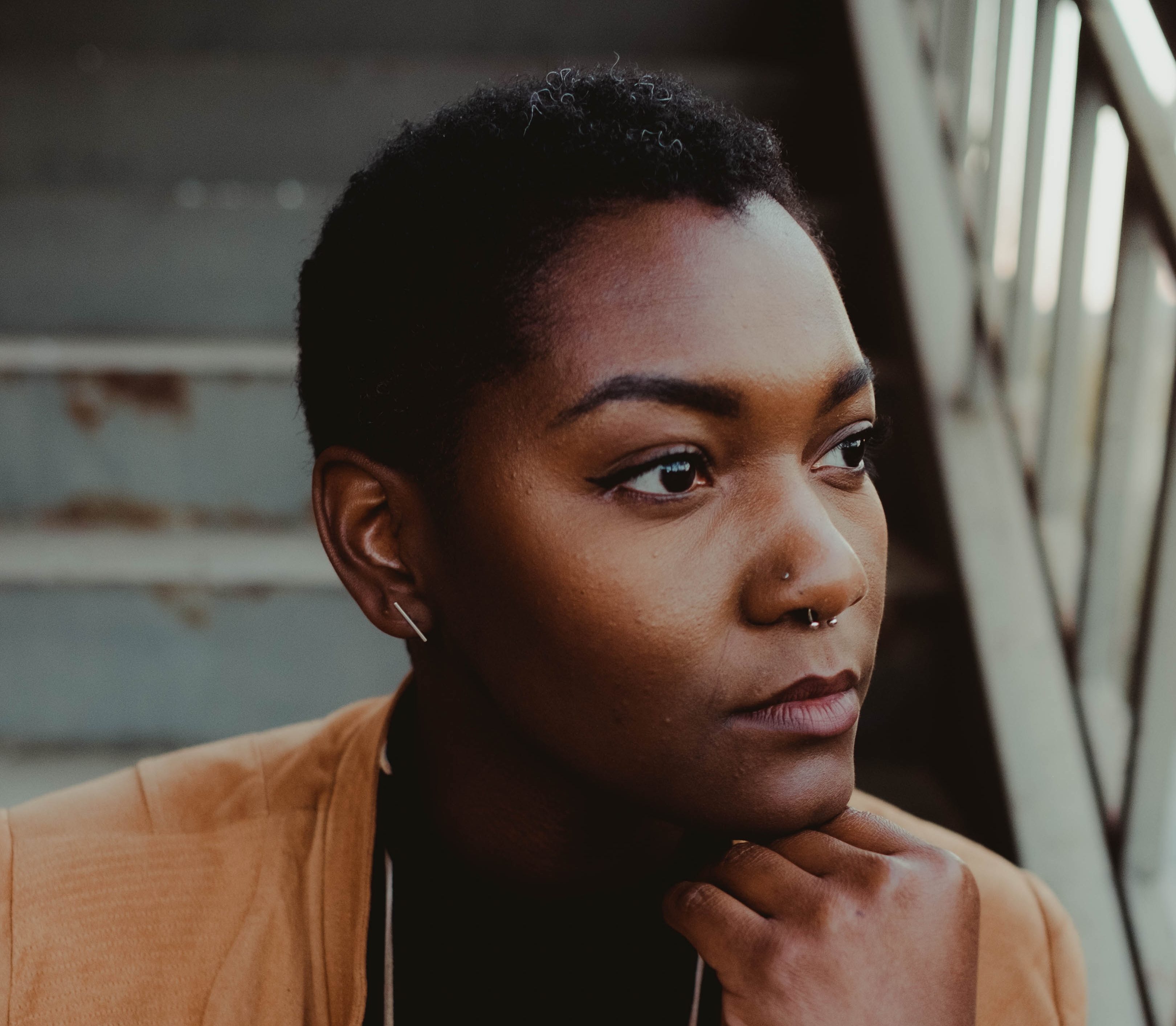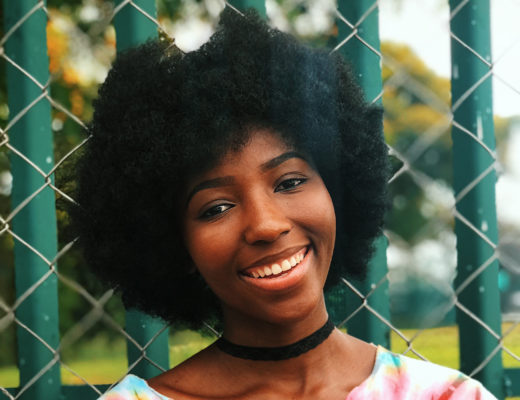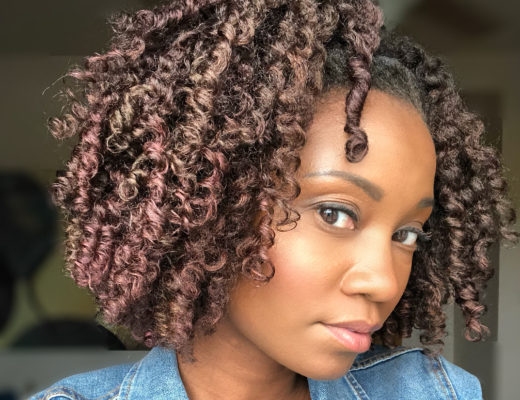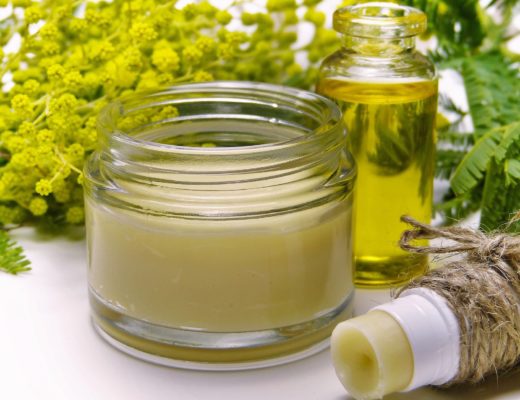This page may contain affiliate links. Read my full disclosure for more info.
Do you find that your hair won’t stay moisturized no matter what you do? Find out why and how to get soft, moisturized hair.
What we'll discuss in this post
1) Product Buildup
Product buildup can be a major issue depending on your hair type and routine.
Low porosity hair can be more prone to buildup as the strands tend to be less permeable and absorb less product. Cowashing and non-sulfate shampoos may not fully remove products.
This is especially of concern if you use silicones, especially those that aren’t water soluble, or if you use heavy oils and butters. Infrequent cleansing can also contribute.
The film of product coating your strands reduces the amount of water that penetrates your hair, causing your hair to dry out and making your products less effective. The layer of products can also make the hair feel stiff.
To avoid this issue, use the lightest products that work for your hair. If your hair gets weighed down by shea butter and castor oil, don’t use them. Try water-based moisturizing sprays and lighter oils such as almond, jojoba, grapeseed or rosehip seed instead.
If you find that heavier products such as shea butter work better for you, use a small amount and be sure to wash them out thoroughly. Wash your hair with a gentle clarifying shampoo or clay wash periodically in order to completely remove the product from your hair and start with a clean slate. Follow up with a deep conditioner and leave in.
Related: How to Moisturize Natural Hair
2) Porosity
High porosity hair absorbs moisture and products easily but also loses water and becomes dry quickly. It’s especially important to use a sealer in order to hold moisture in.
Low porosity hair can be challenging to get products to absorb into in the first place. Try using a steamer and deep conditioning with heat to drive more moisture into your strands.
3) The Wrong Products
Oils and butters don’t moisturize
If you’re using oil or shea butter on dry hair, your hair may become stiff and inflexible. These products can soften dry hair, but to moisturize, you need water in your strands.
Mist your hair with water or apply a water-based moisturizer before using oils or butters.
Water hydrates but doesn’t seal
Spritzing your hair with water to moisturize it is a great idea, but it will evaporate quickly if not sealed, leaving your hair even drier than before. Always seal water into your hair with oil or butter, which will help your hair to retain the water for longer.
Harsh shampoo
Detergents in regular sulfate shampoo strip the oils from your hair. Only use sulfate or clarifying shampoos as needed to remove buildup, opting for cowashing, rinsing or gentle shampoos in between.
You will need to experiment to find the right balance between cleansing your hair enough to remove all or most of the dirt and products, but not so much that it’s stripped.
Always condition after using shampoo.
Silicones
Silicones are great at coating and smoothing the hair, making detangling easier and decreasing breakage from friction. However, this coating also makes our hair less able to absorb water and products.
As mentioned above, if you like silicones, use a sulfate/clarifying shampoo periodically to prevent them from building up. Take care to infuse moisture after removing the layer of product from your hair.
Wrong conditioner or no conditioner
Always use a rinse out or deep conditioner after shampooing. Depending on the condition of your hair and its moisture status, you may want to deep condition every time and use heat.
If your hair feels hard after conditioning, your conditioner may have more protein than your hair needs. You can follow up with a moisturizing conditioner or add more moisturizing products than usual to restore the moisture-protein balance.
Gel
We naturals love our gel for setting wash and gos and slicking edges. However, many products contain alcohols and stiffening agents that leave your hair parched.
Look for gels that contain aloe or flax seed gel, or layer with a water-based moisturizer for less drying effects.
4) Product application
Infrequent moisturizing
If your hair gets dry after one day, by all means, remoisturize after one day (or better yet, before it gets dried out). It’s important to keep your hair moisturized at all times. Moist hair is pliable and less susceptible to breakage.
While you are looking into the causes of your dry hair, don’t make the mistake of moisturizing it too infrequently because you think your hair gets dry too soon. That may be the case, but it’s important to protect your hair and be consistent while you tweak your routine to achieve the right moisture balance.
Incomplete application
After reading the book The Science of Black Hair, I realized that I can’t moisturize my hair by applying product to my palms and rubbing it over my whole ‘fro.
As I’m moisturizing, conditioning, or oiling my hair I use what I’ve termed the “Every Strand Method.” I part through my hair in small sections, applying the product to each small section and smoothing through, just as you do when shingling gels when wearing a wash and go.
As the name implies, every strand needs to be coated, not just the outer layer of your whole head or section.
5) Tap water
Hard or heavily chlorinated water can wreak havoc on your hair, especially if it naturally tends toward dryness. If your dry hair woes started around the same time you moved to a new place, your tap water could be the issue.
Some naturals do a final rinse with distilled water to alleviate this issue. Shower filters are also available, as are shampoos especially for hard water.
Conclusion
If your hair is feeling stiff and breaking, and won’t stay moisturized despite all your efforts and products, try these tips to restore soft, healthy hair.
Like this post? Pin It for Later!
For more natural health, beauty, and lifestyle inspiration, join me on Instagram and Pinterest.







Thank you for writing this very helpful post! My hair is low porosity and never feels moisturized. I hope the tips above help
This is amazing advice my hair has been dry especially since its relaxed so i will be trying these tips 🤗
Great, let me know how it works out.